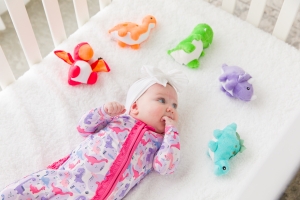Water Safety for Children: 10 Important Tips
#1 Never Swim Alone
If you’ve ever witnessed children playing in a pool or at the beach, you know the undeniable connection between kids and water fun. From splashing around in the kiddie pool to paddle boarding at the lake or zipping down tunneled slides at the waterpark, it’s easy to think that children were made for the water.
But an unexpected water injury can derail your baby's first beach trip or summer fun if your kids aren’t being safe. Although child drowning is the biggest risk of ignoring the rules of water safety for children, there are other hazards to avoid as well. Cuts, scrapes, bruises, and other injuries can all occur when you’re on or near the water.
Fortunately, keeping your children safe—and teaching them to keep themselves safe—around water is as simple as making sure everyone knows the rules for water play. To that end, here are 10 top water safety tips every parent and child should.
#1 Never Swim Alone
One of the most important rules of water safety for children is to never let them swim alone and to ensure they know to stay out of the water if adult supervision isn’t around. When in or near pools, lakes, or other bodies of water, children should always be closely supervised by an adult.
Keeping an eye on your young children while they’re in the water is the best way to avoid common water safety dangers. That means:
- Avoid distractions – When everyone’s playing, and things are calm, it’s easy to let your focus wander from your children. However, when your kids are in the water, it’s a good idea to keep potential distractions, like your phone, out of reach.
- Don’t multitask – If you’re supervising children in the water, they should be your primary focus. Don’t try coupling water supervision with other tasks, like grilling, yard work, or long conversations with other adults.
- Learn CPR – A big part of properly supervising children around water is knowing how to intervene should anything go wrong. Learning CPR can help prepare you to provide assistance that can save a young child’s life.
#2 Don’t Play Games Where You Hold Your Breath
Although competitions to see who can hold their breath the longest might be relatively safe on land, they can pose many dangers when children are in the water. Teach your children early that water safety means not playing games that require depriving themselves of oxygen.
There are several reasons for this. Primarily, when children hold their breath too long, it makes them more susceptible to:
- Hyperventilating
- Fainting or passing out
Understandably, these can be life-threatening outcomes when they happen underwater. For that reason, it’s also a good idea to enroll your child in swimming lessons so that they can learn important techniques for breathing while swimming.
#3 Always Wear a Life Vest
There are two essential swimming accessories for kids before they go in the water: a swimsuit and a life vest. While you can swap the swimsuit for shorts and a t-shirt, there’s no replacement for a wearable floatation device that has the potential to save your child’s life.
But not just any life vest will do. When shopping for a life vest for your child, make sure that it:
- Fits properly – Keep in mind that the size of a child’s life vest corresponds to the child’s weight. To make sure that the vest does its job—i.e., float—make sure it’s big enough to account for your child’s body weight.
- Is the right type – There are five types of life vests recognized by the United States Coast Guard. For regular use, you should choose type II or III for infants and children, respectively.
- Is in good condition – Always check your life vest for holes, frayed or torn straps, and broken clasps before putting it on your child.
#4 Enter the Water Feet First
A sacred tenant of water safety for children and adults is to always enter the water feet-first. Yes, swan dives and inward twisting dives are fun to try, but when your upper body enters the water first, you don’t have much time to react if there’s something unexpected waiting for you just below the surface.
For this reason, it’s best to remind your little ones to always let their feet lead the way, whether they’re jumping in or using the ladder.
#5 Don’t Run Around Water
Speaking of feet, we all know how fast even the tiniest tykes can get their feet moving. But when they’re playing around the pool area, running is a strict no-no.
This is because things tend to get pretty wet around pools. Even big kids can slip and fall when they run across slick concrete. Imposing a poolside speed limit can help your children avoid falls and out-of-water injuries like:
- Cuts and scrapes
- Broken bones
#6 Avoid Horseplay
If you have children who like to play rough, let them know that your water safety for children rules prohibit horseplay.
Rough housing and rowdy behavior are very dangerous around the water. Whether you’re in a swimming pool or at the beach, make sure to outlaw things like:
- Dunking
- Holding each other underwater
- Throwing people into the water
#7 Don’t Overdo It
When children are splashing around for hours in the hot sun, they can tire out pretty quickly, and if there are two things that don’t mix, it’s water and exhaustion.
In fact, according to SafeKids Worldwide, staying in the water when tired is one of the leading causes of drowning among children.
Alleviating these dangers isn’t as difficult as you might expect. Here are a few tips for what to do when swimming tuckers your kids out:
- Keep snacks and water nearby – A good way to boost energy levels is to give your kids the fuel they need to replenish their bodies. This means taking the time for lunch and snack breaks, as well as drinking plenty of water.
- Conserve energy – If your small child overtires and it isn’t possible to get them out of the water immediately, remind them to conserve their energy. Slowly treading water, avoiding panicked reactions, and stretching can all help.
- Reapply sunscreen – Aside from protecting your skin from harmful UV rays, sunscreen also helps your body regulate its own temperature. So, reapplying sunscreen can help your kids maintain their energy levels while they’re swimming.
#8 Know Where to Swim
From the backyard swimming pool to the one at the YMCA, most kids are exposed to a range of swimming locations. But no matter how good your small child is at swimming, not all bodies of water are appropriate. In particular, rivers and other bodies of moving water should be avoided.
In moving water, currents can get very fast and very strong, and even some adults may struggle to free themselves if they get caught in the flow.
That’s why you should teach your children to never swim in rivers, creeks, or other moving water.
#9 Steer Clear of Pool Drains
Although drains are necessary to keep pool water from becoming stagnant, they can be quite dangerous if you’re not paying attention. For that reason, children need to be taught to stay away from pool drains while playing.
Pool drains are dangerous because they use suction to keep your pool clean. And while your young child isn’t likely to get sucked into the drain, other things might, like their:
- Swimsuits
- Hair
- Limbs
Getting trapped in a backyard pool drain can mean being held underwater, so be sure to explain the dangers of pool area drains to your children and why they shouldn’t play near them before your next day at the pool.
#10 Stay in Allowed Areas
Finally, no plan for water safety for children is complete without a rule that states that children should stay only in allowed areas. This may mean staying in the shallow end of the swimming pool, not going past the buoys at the lake, or avoiding areas in the water that have been prohibited.
Additionally, make sure your children are familiar with and understand the importance of:
- Depth markers – It’s imperative that you teach your children how to read and understand the depth markers of a pool. The deep end isn’t designed for tiny bodies or swimmers who haven’t fully developed their strength, so make sure your kids know their boundaries when it comes to water.
- Lane markers – If you’re swimming in a pool with ropes or other lane markers, make sure your children know these items are not toys. Hanging on or playing with pool lane markers can lead to serious injuries and should be avoided.
RuffleButts: Keeping Kids Safe In and Out of the Water
When it comes to keeping your kids safe in the water, making sure they understand water safety rules and what to do if things go awry is crucial.
But when it comes to keeping them safe out of the water, one of the best things you can do is dress them properly with girls or boys rash guards. Whether you’re scampering along the beach, playing by the pool, or strolling along the shore, RuffleButts has the clothing options you and your little ones need in our mommy and me swimsuits collection.
Protect her skin from sun, sand, scrapes, and other common water dangers by dressing her in Ruffflebutts Pastel Petals Long Sleeve Rash Guard Bikini. This long sleeve swimsuit is made with UPF 50+ sun protective fabric, putting a barrier between your daughter’s skin and the elements that can harm it—but not between her and fun. Then, top it off with our Pink Seersucker Swimhat or Pink Sun Protective Hat for the ultimate in pretty protection.
Sources:
WRAL. What to Prevent Drownings? Don’t Let Kids Play Breath-Holding Games. https://www.wral.com/want-to-prevent-drownings-don-t-let-kids-play-breath-holding-games/16734622/#
Tales of a Mountain Mama. Best Kids Life Jackets + How to Choose. https://talesofamountainmama.com/best-kids-life-jackets/#
Valley News Live. Drowning Dangers Due to Exhaustion. https://www.valleynewslive.com/content/news/Drowning-dangers-due-to-exhaustion--485054131.html









